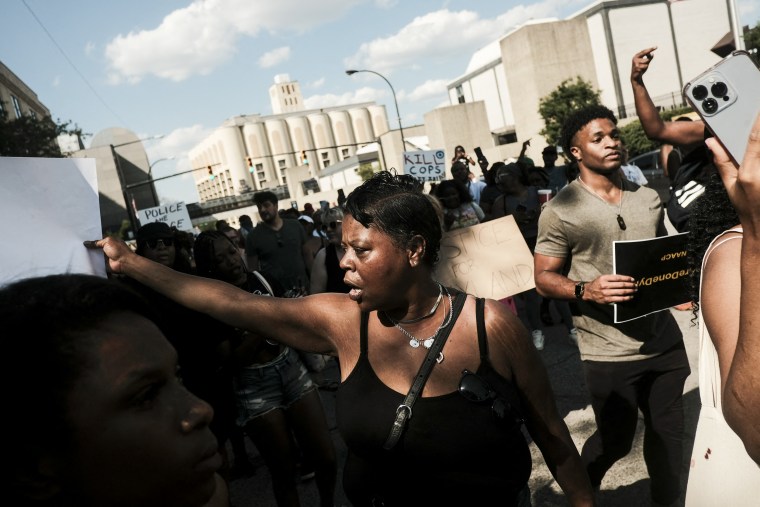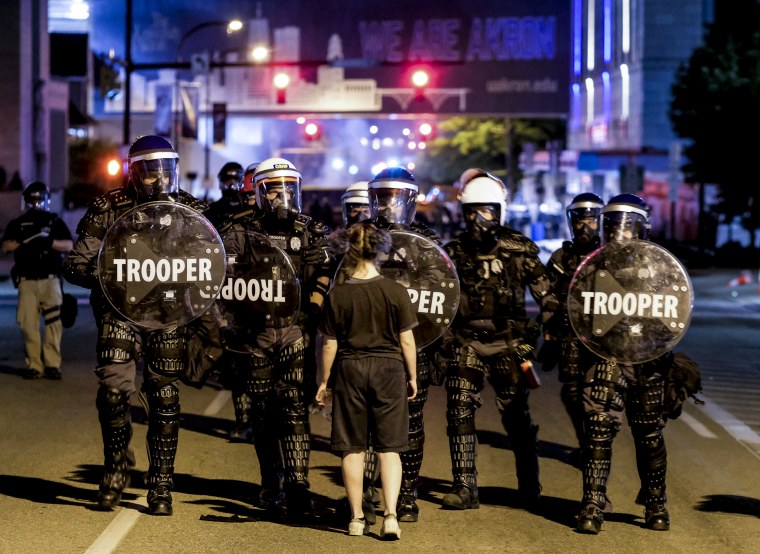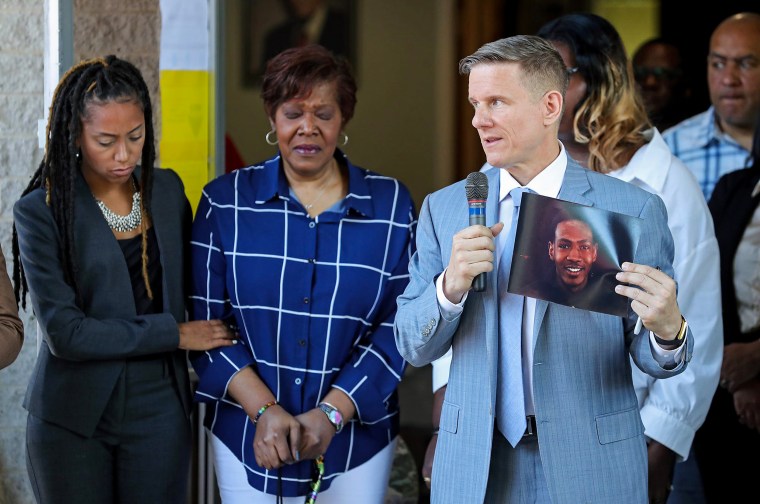The Akron Police Department may not have met a state standard that could have prevented the type of police pursuits that ended in the death of Jayland Walker, an unarmed Black man who was shot 90 times by eight officers.
Ohio Gov. Mike DeWine had pushed for the standard in 2019 when he asked an influential state policing board to assess vehicle pursuit policies based on recommendations made in 2016 when he was state attorney general.
Ohio’s law enforcement agencies are not required to meet this standard, but the state maintains a certification process and keeps tabs on which departments have fulfilled its conditions.
A key element that resulted from the assessment by the Ohio Collaborative Community-Police Advisory Board requires every police department to add a provision to its pursuit policy prohibiting or discouraging car chases “when the suspect is known to the officers or easily identifiable” for it to fulfill the state's vehicle pursuit standard.
Walker’s family believes he was identifiable when Akron police flashed their lights and chased him from a highway onto city streets.
But the question remains whether the officers knew that Walker, 25, was the driver of the car from which he later fled or whether they could have identified him as such.
Graphic body camera footage showed that when Walker turned to face officers after a short sprint, his body was hit by dozens of rounds. His body twitched on the ground long after the first shot was fired, as it was riddled with bullets.
Police said they believed he was turning in a way that they thought might be a firing position.
Bobby DiCello, the Walker family's attorney, said Akron police were aware of another department's attempt to stop Walker the night before the shooting and had access to his license plate number, which could have helped them make an identification.
Walker's car was chased by officers from the nearby New Franklin Police Department at 2:30 a.m., the day before he was killed, according to a police report.
DiCello said he believed Akron officers "saw or knew of my client’s car when they first encountered it.” He declined to provide details.
“They only chose to stop him after running the license plate and finding the flag from New Franklin,” he said.
The eight officers who fired at Walker were placed on administrative leave, and the city of Akron canceled its July Fourth celebration in the wake of protests, while the state attorney general's office announced it would launch an investigation.

The Akron Police Department did not respond Friday to a request for comment about whether it had identified Walker's car or the driver. A spokesperson had previously said “the investigation is ongoing,” and “no additional information is available at this time.”
As for the police pursuit standard, exceptions are allowed if the alleged offenders are believed to be a danger to responding officers or to themselves or others.
Akron officers who chased Walker said they heard a gun being discharged from his car about 40 seconds into the pursuit, and a casing was found at the scene. An unloaded handgun and a magazine were found on the driver’s seat of Walker’s car, police said, but they did not find a firearm on his body.
DiCello said he believed Walker, who did not have a criminal record, was going through a personal crisis at the time, and Akron police and other members of law enforcement could have de-escalated the situation by realizing Walker might flee again.
The standard set by the Ohio policing board could have discouraged officers from engaging in a chase if they had identified Walker and his car, DiCello said.
“Whether it was simply a function of him being afraid or making rash and poor decisions, we may never know," he said, "but it certainly did not earn him a death sentence.”
Loose procedures and no requirements
About a third of all law enforcement agencies in Ohio, or 308, have received the state police pursuit certification since it was introduced three years ago. It is one of four certification standards offered by the policing board; the others address use of force, community engagement and bias-free policing.
Akron is one of eight agencies this year seeking pursuit certification, according to the governor’s office. Its current car chase policy was adopted in 2020.
Although Ohio law enforcement agencies are not required to fulfill the certification process, the governor's office said it is encouraged.
“Standards can help lead to better practices," Dan Tierney, DeWine's press secretary, said. "When it comes to law enforcement pursuits, there can be tragic and unintended consequences.
"It’s important that we give our Ohio law enforcement agencies the best support we can, which includes a standard to consider as each agency makes the right decision for its community.”
Rockney Carter, pastor of Zion Baptist Church in Dayton, Ohio, was among the stakeholders in 2016 who helped create the recommendations for DeWine when he was Ohio attorney general. The group was assembled after a man was killed in a police car chase just outside Dayton.

While grateful that DeWine raised awareness about the issue, Carter said that without the standards becoming statewide requirements, he was "waiting on Jesus" for real change. It seemed, he said, that lawmakers were not aiming to do more.
"These types of rules might give human rights to people, so that they aren't treated like animals," he said. "You have got to enforce rules and enforce it equitably."
DiCello went further, calling the current standards "anemic" and "suggestions" rather than firm policies required by law.
Akron's current policy says officers must believe that engaging in a pursuit is less dangerous than allowing the suspect to "remain at large." It also lists "whether the identity of the driver is known" as one of 11 factors officers should consider before engaging in a chase, but experts said it did not provide real clarity for officers.
“The way the policy’s written in Akron, you can pretty much do anything you want — it’s very vague,” said Geoffrey Alpert, a criminal justice professor at the University of South Carolina who has studied police pursuits for decades. “ I don’t like these kinds of policies for many reasons, but one is that it puts the cops in the absolutely worst position.”
It's not just an Akron problem, however. Experts said there were larger institutional problems at work as well.
Although DeWine's 2016 board recommended that law enforcement agencies contribute to a statewide database to further develop best practices, that database still does not exist.
The same is true for most states in the country, said John DeCarlo, a criminal justice professor at the University of New Haven and a former chief of police in Connecticut.
"To make valid decisions with some gravitas, we have to collect data," DeCarlo said. "We want to make police departments work as well as they can and serve communities as best they can, but we can't do that without more information."

